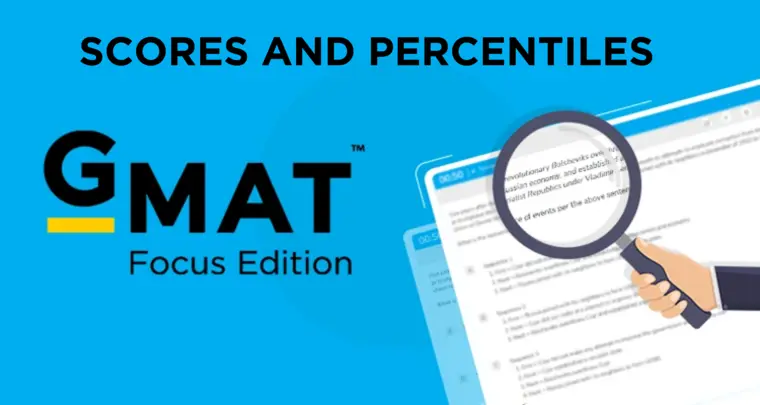Right triangle PQR is to be constructed in the xy-plane so that the right angle is at P and PR is parallel to the x-axis. The x and Y coordinates of P, Q and R are to be integers that satisfy the inequalities -4 ≤ x ≤ 5 and 6 ≤ y ≤ 16. How many different triangles with these properties could be constructed?
Options:
- A. 110
- B. 1,100
- C. 9,900
- D. 10,000
- E. 12,100
2. Solution Section:
Solution:
- Translate the problem requirements: We need to count right triangles PQR where P is the right angle vertex, PR is horizontal (parallel to x-axis), and all vertices have integer coordinates within specified bounds (-4 ≤ x ≤ 5, 6 ≤ y ≤ 16).
- Identify geometric constraints from the right angle condition: Since angle P is 90° and PR is horizontal, side PQ must be vertical (perpendicular to PR), which restricts how we can place the three points.
- Count valid positions for each vertex systematically: Determine how many coordinate positions are available for P, then for each P position, count valid positions for Q and R that satisfy the geometric constraints.
- Apply the multiplication principle: Calculate total triangles by multiplying the number of choices for each vertex, ensuring we account for the independence of choices.
Execution of Strategic Approach
- Translate the problem requirements Let’s break down what we need to understand from the problem statement:
What is a right triangle with these properties?
- We have three points P, Q, and R that form a triangle
- The right angle (90°) is at point P
- Side PR must be parallel to the x-axis (horizontal)
- All three points must have integer coordinates
- All coordinates must satisfy: -4 ≤ x ≤ 5 and 6 ≤ y ≤ 16
What does “different triangles” mean? Two triangles are different if they have at least one vertex at a different location. So we’re counting all possible ways to place three points P, Q, and R that satisfy our conditions.
Available coordinate grid:
- x-values: -4, -3, -2, -1, 0, 1, 2, 3, 4, 5 (that’s 10 possible values)
- y-values: 6, 7, 8, 9, 10, 11, 12, 13, 14, 15, 16 (that’s 11 possible values)
Process Skill: TRANSLATE – Converting the geometric language into clear coordinate constraints
- Identify geometric constraints from the right angle condition What does “right angle at P” mean geometrically? If angle P is 90°, then the two sides meeting at P (which are PQ and PR) must be perpendicular to each other.
What does “PR parallel to x-axis” tell us? If PR is horizontal (parallel to x-axis), this means:
- Points P and R have the same y-coordinate
- Points P and R have different x-coordinates
- So if P is at (x₁, y₁), then R must be at (x₂, y₁) where x₂ ≠ x₁
What about point Q? Since PQ must be perpendicular to the horizontal line PR, PQ must be vertical. This means:
- Points P and Q have the same x-coordinate
- Points P and Q have different y-coordinates
- So if P is at (x₁, y₁), then Q must be at (x₁, y₂) where y₂ ≠ y₁
Process Skill: INFER – Drawing the non-obvious conclusion that PQ must be vertical
- Count valid positions for each vertex systematically How many ways can we choose point P? Point P can be anywhere on our grid, so:
- P has 10 choices for x-coordinate × 11 choices for y-coordinate = 110 possible positions
For each choice of P, how many ways can we choose R? Once P is chosen at position (x₁, y₁), point R must be at (x₂, y₁) where:
- R has the same y-coordinate as P (so y-coordinate is fixed)
- R has a different x-coordinate than P
- Since there are 10 possible x-values total, and we exclude P’s x-coordinate, R has 9 possible positions
For each choice of P, how many ways can we choose Q? Once P is chosen at position (x₁, y₁), point Q must be at (x₁, y₂) where:
- Q has the same x-coordinate as P (so x-coordinate is fixed)
- Q has a different y-coordinate than P
- Since there are 11 possible y-values total, and we exclude P’s y-coordinate, Q has 10 possible positions
Process Skill: APPLY CONSTRAINTS – Systematically accounting for the geometric restrictions
- Apply the multiplication principle How do we count the total number of triangles? Since the choices are independent:
- First, choose P: 110 ways
- Then, choose R: 9 ways (for each choice of P)
- Then, choose Q: 10 ways (for each choice of P)
Total number of triangles: 110 × 9 × 10 = 110 × 90 = 9,900
Let’s verify this makes sense:
- We have 10 × 11 = 110 positions for P ✓
- For each P, we have 9 positions for R (same row, different column) ✓
- For each P, we have 10 positions for Q (same column, different row) ✓
- Total: 110 × 9 × 10 = 9,900 ✓
- Final Answer The total number of different right triangles that can be constructed is 9,900.
This matches answer choice (C) 9,900.
Common Faltering Points
Errors while devising the approach
- Misunderstanding what “right angle at P” means geometrically Many students struggle to translate “right angle at P” into the constraint that sides PQ and PR must be perpendicular. They might think this just means P is a corner of the triangle, without realizing it creates specific geometric restrictions on how Q and R can be positioned relative to P.
- Missing the perpendicularity constraint Even when students understand that PR is parallel to the x-axis (horizontal), they often fail to make the crucial connection that PQ must therefore be perpendicular to PR, meaning PQ must be vertical. This leads them to allow Q to be placed anywhere on the grid rather than restricting it to the same x-coordinate as P.
- Not recognizing this as a systematic counting problem Students may attempt to visualize or draw specific triangles rather than recognizing this as a problem where they need to count all possible valid combinations of three points. This leads to inefficient approaches or incomplete counting.
Errors while executing the approach
- Incorrectly counting available positions for R and Q Students often forget to exclude P’s position when counting options for R and Q. For example, they might count 10 positions for R instead of 9 (forgetting that R cannot occupy the same position as P), or 11 positions for Q instead of 10 (forgetting that Q cannot have the same y-coordinate as P).
- Arithmetic errors in the final multiplication When calculating 110 × 9 × 10, students may make computational mistakes, especially in intermediate steps like 9 × 10 = 90, leading to incorrect final answers.
- Confusing the coordinate ranges Students may miscalculate the total number of available x-values (thinking there are 9 instead of 10) or y-values (thinking there are 10 instead of 11) by incorrectly handling the inclusive ranges -4 ≤ x ≤ 5 and 6 ≤ y ≤ 16.
Errors while selecting the answer
No likely faltering points – once students have calculated 9,900 correctly, the answer choice (C) is clearly identifiable and matches exactly.














